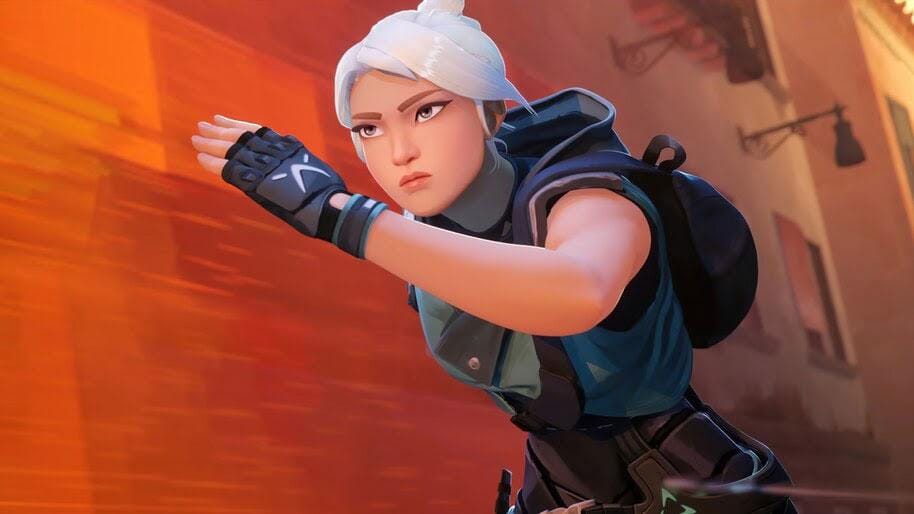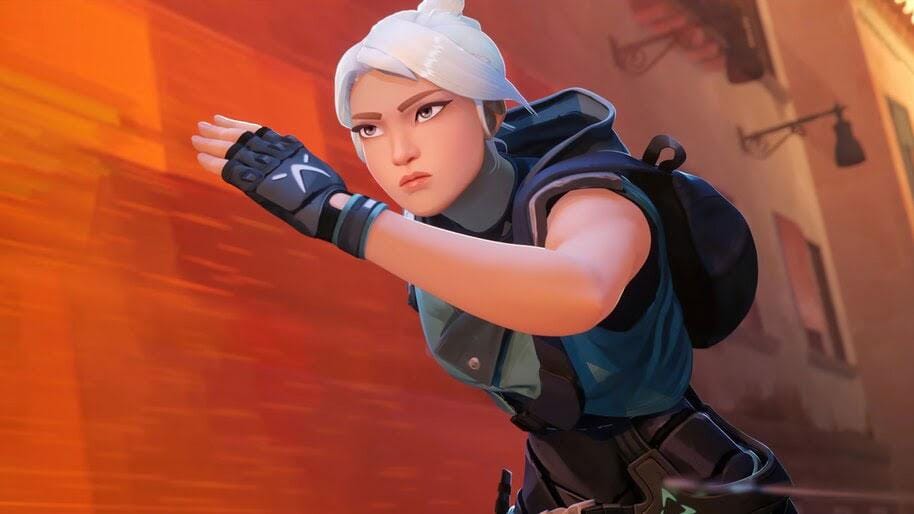


Every movement in Valorant can be the difference between victory and defeat. More than just sharpshooting, this first-person shooter requires intelligent strategies executed at optimal timing with precision. This comprehensive Valorant movement guide delves deep into the detailed tips and tricks, exploring techniques to make you move smarter. Whether you're a beginner trying to find your footing or an experienced player looking to refine your skills, this guide is your key to unlocking new levels of in-game agility and prowess.
Before diving into the expert tips to improve your valorant movement, players must grasp the basics of movement in Valorant. In this high-stakes tactical shooter, every step counts. Valorant's movement mechanics are designed to reward precision and penalize recklessness. Good movement is about speed and control. It's knowing when to be a silent assassin, creeping up on your enemy, and when to dash for cover.
Valorant is a game where sound matters as much as sight. Knowing when to walk silently and when to run can make all the difference. Walking (holding the Shift key by default) silences your footsteps, making it harder for enemies to pinpoint your location. Running is faster but noisier, ideal when time is critical or when you're sure the coast is clear.
Valorant's maps are filled with objects and structures you can use for cover. Learning how to use these effectively is key. To avoid becoming an easy target, peeking from behind a cover should be done cautiously and unpredictably. Remember, your enemy might be doing the same, so always be ready to adjust your position.
In Valorant, mastering strafing and counter-strafing can be your ticket to outperform opponents in duels. Strafe involves moving sideways, left or right, to make yourself a moving target while maintaining aim on the enemy. The unpredictability keeps your opponent guessing. Counter-strafe is quickly halting your strafe by moving to the opposite direction, stabilizing your aim for a millisecond to take an accurate shot. This technique is crucial, especially in one-on-one gunfight, where landing the first-shot accuracy often means winning the duel. It's about timing these actions perfectly to confuse enemies while lining up your shot. Practice these in custom games to get the feel, as timing and muscle memory are crucial.
Your stance in Valorant indicates your intention. Standing upright offers speed and a full range of vision but makes you an easier target. Conversely, crouching reduces the sound of your movements, making it harder for enemies to hear you approach. It also stabilizes your aim, especially for long-range shots, by reducing recoil. However, overdoing it can make you a predictable and easy target, especially for headshots. The best times to crouch are when you're attacking from behind, when the opponent is reloading, when you're holding an angle, or when you're crouch peeking. Crouch peeking is effective for dodging an enemy's crosshairs. It is usually below standing head level, allowing you to potentially shoot first as you quickly crouch while peeking around a corner. Avoid crouching in close-quarters combat or when you need to stay mobile.
Jump peeking in Valorant is essential for gathering valuable information and baiting enemy shots, especially around corners. This technique involves quickly jumping out from cover and back, giving you a brief glimpse of enemy positions without fully exposing yourself. The key is in the timing and the angle of your jump. You want to jump out just enough to see but not so much that you become an easy target. It's also about unpredictability; varying your peeking spots and timing can keep enemies guessing. Practice jump peeking in different map locations to understand where and how it works best. Use jump peeking to gain an advantage in Valorant, but be aware of the risks – a well-timed enemy shot can take you out mid-jump.
Jiggle peeking is also a vital tactic in Valorant for safely gathering information. It involves briefly exposing a small part of your character model by quickly alternating between the 'A' and 'D' keys to peek out from cover. The goal is to make yourself harder to hit while getting a quick look at enemy positions. When done right, jiggle peeking lets you spot enemies without giving them a clear shot. This technique is especially useful in high-stakes situations where getting information is critical. To master jiggle-peeking, practice the rhythm of your keystrokes to minimize exposure time.
Wide peeking is when you aggressively swing out from cover to take a fight. It's a bold move that can catch enemies off guard but can also leave you vulnerable. The key to wide peeking is confidence and speed; you need to be quick and decisive to throw off your enemy's aim. However, it's a double-edged sword – while you might catch an opponent off guard, you also expose yourself to potential fire from multiple angles. Use wide peeking when you have intel on enemy positions and are relatively sure you're not walking into a crossfire. It works well in one-on-one scenarios or when you have a backup from your team.
Air-strafing in Valorant involves moving in the air after a jump. You use the 'A' and 'D' keys combined with mouse movement and change direction mid-air. It's perfect for dodging bullets during a retreat or approach. Bunny hopping is chaining jumps together while strafing, maintaining your momentum to move quickly across the map. It's tricky but effective for evading enemy fire and covering ground rapidly. To practice, start by jumping and gently moving your mouse in the direction of your strafe. The key is timing your jumps just as you hit the ground and syncing your mouse movement with your strafing keys. Remember, these techniques require practice, but once you get the hang of it, you'll add a dynamic layer to your gameplay that can disorient opponents and give you a tactical edge.
In Valorant, using the environment to your advantage is key, and that includes climbing and parkour techniques. Knowing how to scale platforms and utilize map terrain can open up new angles for attack and defense. Climbing is about using objects like boxes or ledges to gain height and surprise enemies. It requires timing your jumps and understanding the map's layout to find climbable spots. Parkour involves more fluid movements like running jumps, wall jumps, and ledge grabs to traverse the map quickly and unpredictably. Effective parkour can get you to crucial points faster or allow for unexpected flanks. Practice in custom games to learn the specific jump spots where these techniques are most effective. Whether it's a quick ascent for a better sniping position or a rapid cross-map movement to reinforce a site, mastering these skills can significantly enhance your strategic options in Valorant.
Consistently pressing the 'W' key to move forward in one direction can be a tactical misstep. While charging straight into action might seem aggressive, it often leads to predictable patterns, making you an easy target. Instead, focus on diversifying your movements. Mix strafing ('A' and 'D' keys) with forward motion to create a zigzag pattern, making it harder for enemies to land their shots. Incorporate sudden stops or changes in direction to throw off opponents' aim. Remember, unpredictability in movement is as crucial as accuracy in shooting. By breaking the habit of using 'W' too much, you make yourself a harder target and gain strategic positioning.
Knowing the maps of Valorant is about memorizing layouts, and understanding the flow of movement, the common choke points, and the sneaky spots or higher ground that most players overlook. Spend time exploring every nook and cranny of each map. The more familiar you are with a map, the more confidently you can move through it.
In Valorant, timing is everything. Knowing when to push, hold back, and reposition can turn the tide of a battle. It's not just about where you move, but when. This Valorant game sense timing comes with experience, so be patient and learn from each round.
Solo skills are important, but Valorant is a team game. Your movement should be in sync with your teammates. Communicate your actions, coordinate your pushes, and cover each other's movements. Teamwork in movement can lead to dominating control over the map.
High-ranked players in Valorant often improve their movement in Valorant through practice and specific drills.
Start with strafing exercises in the practice range: move left and right while keeping your aim fixed on a specific point, enhancing your ability to aim, dodge and shoot accurately.
For bunny hopping, practice chaining jumps while alternating strafing directions to maintain momentum and unpredictability.
Set up custom games to practice jump peeking and jiggle peeking around corners, focusing on minimal exposure.
Try parkour routines by navigating maps using only jumps, climbs, and strafes, which will help you discover new paths and angles.
Time yourself for these exercises and try to beat your record, adding an element of challenge.
Regularly incorporating these drills into your practice routine will not only improve your agility and reflexes but also build muscle memory, mastering movements as a second nature during high-pressure situations in the game.
A skilled coach in Valorant can dramatically enhance your understanding and execution of movement techniques. They provide personalized feedback, identifying areas where your movement can improve, from basic strafing to advanced positioning. Coaches also offer tailored exercises and drills that target your unique challenges, helping you develop muscle memory and reaction speed. Additionally, they can provide insights into professional players' strategies, translating high-level concepts into actionable advice for your gameplay. A coach's external perspective can spot habits you might not realize that are holding you back, guiding you towards more effective and unpredictable movement patterns.
In Valorant, your movement should be a harmonious part of your team's overall strategy. Coordinate with teammates to execute synchronized pushes or retreats, ensuring you cover each other and create crossfires. Use your movement to gain map control, taking strategic positions that force the enemy to react. For instance, if you're attacking, quick and coordinated movements can help you take key areas, forcing defenders to reposition. On defense, smart positioning and timely rotations can disrupt attackers' plans. By syncing your movement with your team's strategy, you create a cohesive unit that's more effective at controlling the map, taking down enemies, and executing game plans.
Leveraging the right technology, such as high-refresh-rate monitors and adjustable DPI gaming mice, can significantly enhance your Valorant gameplay by improving reaction time and movement precision. Custom keybindings, mouse bungees for cable management, and a stable internet connection are also crucial for optimizing gaming performance.
We've covered a lot of ground in this guide, from the basics of movement to advanced techniques used by the pros. Use this guide as your roadmap in various fps games, such as Valorant, Overwatch, and CS:GO; don't be afraid to experiment and find what works best for you. Keep practicing, stay agile, and, most importantly, enjoy the game.